Forgotten Rivers and Mountain Peaks: A Journey Along the Southern Shore of Issyk-Kul is a three-day tour that immerses you in the unique natural beauty of Kyrgyzstan.
- Duration: 3 days.
- Price: from 1300$ 1000$ for group
- Group size: Small group tour
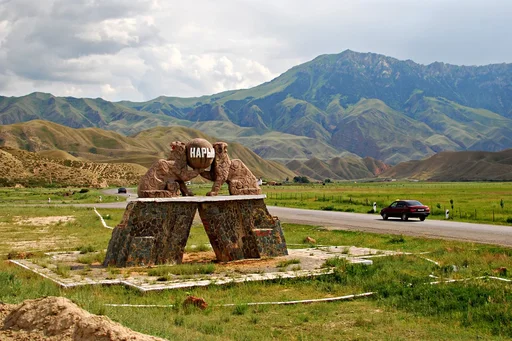
Naryn is a high-altitude city in Central Asia and the administrative center of Kyrgyzstan’s Naryn Region. This small city is spread out in the picturesque valley of the Naryn River, surrounded by ridges of the inner Tien Shan. Naryn is known for its harsh climate, rich history, and unique culture. In this article, we present a detailed overview of the city: from its geography and ancient past to its modern realities.
The city of Naryn sits at around 2,000 meters above sea level in a broad intermontane basin carved by the Naryn River. To the south, the Naryn-Too ridge towers above the city, while rolling foothills and snowy Tien Shan peaks surround it. The main waterway is the swift Naryn River, which, once joined by the Kara Darya, forms the Syr Darya - one of Central Asia’s largest rivers. Within the city limits, the riverbanks are linked by bridges, including the picturesque “Asma” suspension bridge.
The region has an extreme continental, arid climate. Winters are long and bitter: average January temperatures range from –15 to –18°C, with nights occasionally plunging below –30°C. Summers are warm but short, averaging +17 to +20°C in July. Annual precipitation is low (around 280 mm), so the air is dry and the surrounding landscape semi-desert. Snow cover in the valleys is shallow (15–20 cm), although the nearby Tien Shan mountains maintain snow and glaciers year-round.
The nature around Naryn amazes with a diversity of high-mountain ecosystems. Valleys are covered in wormwood, feather grass, and steppe grasses, while slopes are cloaked in stands of local juniper (archa) and rare Tien Shan firs. Nearby, the Naryn State Nature Reserve protects conifer forests and alpine meadows on the Naryn-Too ridge. Wildlife includes bears, snow leopards, ibex, wolves, and golden eagles, captured on camera traps. The region is also home to Marco Polo sheep (argali), red wolves, lynx, and other Tien Shan fauna. High-mountain lakes Sary-Chelek and Chatyr-Kul - crystal-clear waters ringed by summer pastures (jailoo) and snow-capped peaks - are true jewels of the region.
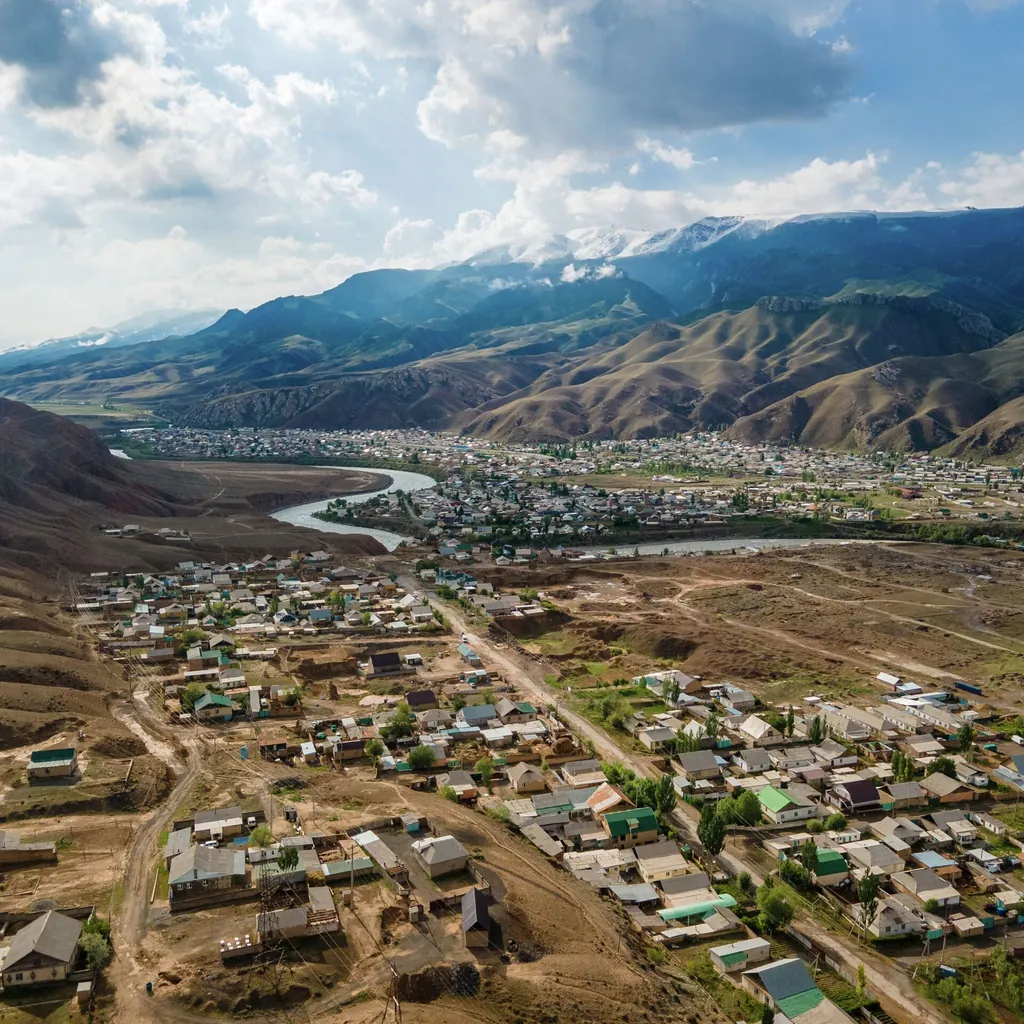
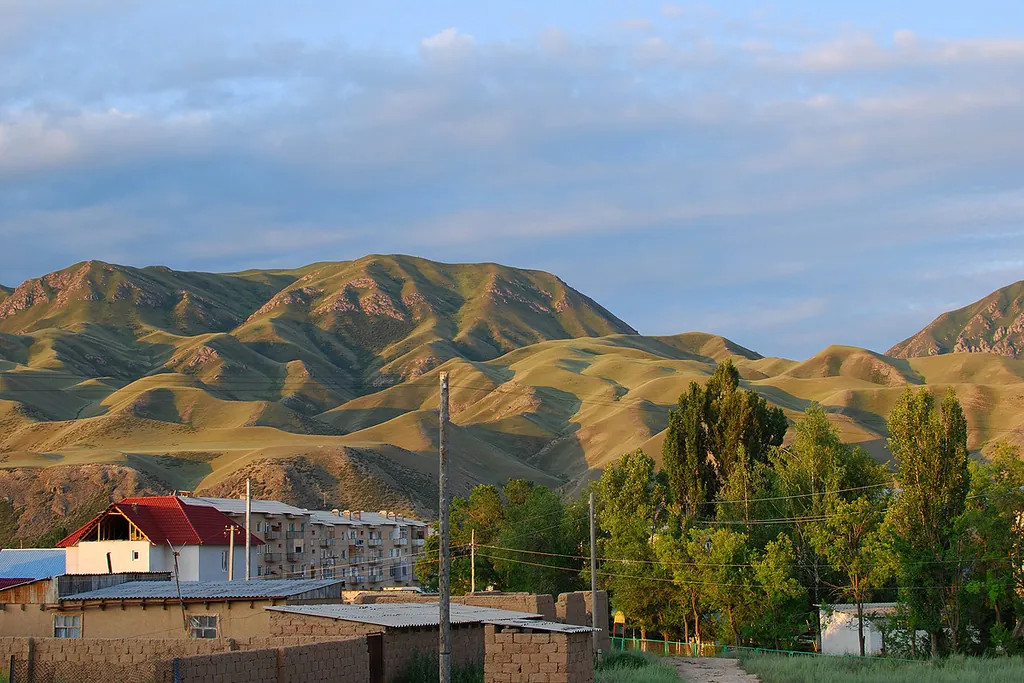
Earliest Times. Naryn Region’s lands bear witness to ancient history. Stone Age campsites have been found in the mountains (e.g., in On-Archa Gorge). From the early Common Era, nomadic Saka-Usun tribes wandered these lands, followed later by Turkic and Kyrgyz tribes. No permanent cities arose until modern times, but the region lay on the Great Silk Road. Caravans crossed mountain passes such as Torugart and Dolon, linking Eastern Turkestan (Kashgar) with the Semirechye and Fergana steppes. One legacy of that era is the 15th-century Tash-Rabat stone caravanserai - an extraordinary mountain refuge for traders high in the At-Bashy range. Nearby lie the ruins of Koshoi-Korgon fortress (7th–8th centuries), likely a Silk Road fort.
Kokand Khanate Era. In the 18th–19th centuries, Kyrgyz of the Sayak clan, subjects of the Kokand Khanate, inhabited these lands. In the 1830s, Kokand rulers built fortifications in the Tien Shan to assert control. In 1832, they founded the Kokand fortress of Kurtka at the junction of the Kurtka and Naryn rivers. Local Kyrgyz leaders resisted: brothers Taylak and Atantai Batyr led an armed uprising against the Kokand garrison. Taylak Batyr (1796–1838), born on the Naryn’s banks, became a folk hero, dying in the struggle for freedom. His memory endures: a monument to Taylak Batyr was unveiled in Naryn in 2002 to mark his bicentennial, and his mausoleum has been restored.
Foundation of Modern Naryn. Until the mid-19th century, there was no permanent settlement on today’s site of Naryn. The turning point came with the Russian Empire’s arrival. After annexing the Tien Shan, Russia established a garrison here in 1868 and built the Naryn fort. The small military post guarded caravan routes and maintained postal links with the Russian consulate in Kashgar. A settlement (slobodka) grew around the fort, marking Naryn’s origin in 1868. According to legend, the city’s name comes from the traditional “Naryn” dish - a hot broth with sliced horsemeat - said to be particularly delicious here. Other theories link “naryn” to the Mongolian “naran” (sunny) or the Chinese “naren” (narrow pass), both reflecting the city’s narrow valley setting.
In the late 19th century, Naryn was part of the Semirechye Region of the Russian Empire. It remained a small garrison outpost on the empire’s fringe. Locals primarily engaged in nomadic livestock and servicing caravan trade. A postal road linking Verny (Almaty) with Kashgar ran through Naryn, giving it strategic importance. By the early 20th century, the settlement had a post station, market, and Orthodox mission, but was not yet a full-fledged town.
After the 1917 October Revolution, power in Naryn passed to the Soviets. In 1920, White Guard forces briefly attempted to seize control but were driven out, and Soviet authority was established. Administratively, the area joined the Kyrgyz ASSR (later the Kyrgyz SSR). In 1927, Naryn was officially granted town status and became the center of the newly created Naryn Okrug (Region).
The Soviet era brought gradual infrastructure development. Schools and hospitals opened, and a local history museum was founded by enthusiasts to preserve regional heritage. In the 1930s, road connections to other Kyrgyz regions appeared. Agriculture specialized in fine-wool sheep farming - state farms grazed vast herds on mountain pastures. By the late Soviet period, Naryn’s population exceeded 40,000 (42.2 k in 1989), and small food industries (dairy, bakeries) and service enterprises operated there. Naryn Region was created in 1939 (as Tian-Shan Region), abolished in 1962, and restored in 1970. Naryn remained the regional center, though it briefly merged with neighboring Issyk-Kul Region in 1988–1990.
With Kyrgyzstan’s independence in 1991, Naryn entered a new phase. The economic crisis of the 1990s hit this remote mountain town hard: many industries closed and population fell (to ~35 k in 1999). Nevertheless, Naryn retained its importance as a regional hub. The city became home to regional authorities and the Naryn State University (1996). A Naryn Free Economic Zone was launched to attract investment and trade. Gradually, as roads improved, transit through Naryn increased (to China and back), boosting local commerce and tourism. In 2016, the new campus of the University of Central Asia - an Aga Khan-backed international institution - opened, marking a milestone for the city’s educational sector. Today, Naryn is an administrative, educational, and cultural center of a vast mountain region, preserving Soviet legacies while modernizing.
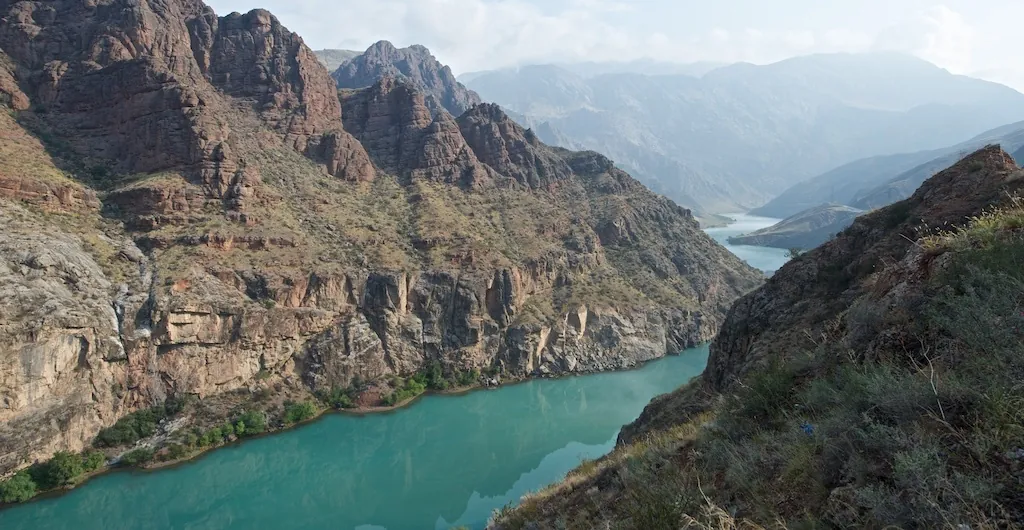

Naryn’s architectural character blends modest Soviet-era provincial heritage with national motifs. The city is laid out along the Naryn River bed - its main thoroughfare (Lenin Street) runs parallel to the river through the entire city. On the central square stands a monumental statue (formerly Lenin, now replaced by a national hero’s figure), flanked by the regional administration building and the Drama Theater. A local pride is the “Blue Mosque” (Azreti Ali) - the city’s main mosque. Built in the 1990s, it is Naryn’s most beautiful building and a fine example of modern sacred architecture. Its dome interior is decorated with patterns evoking a Kyrgyz yurt, facades bear national “oimo” ornamentation, and its sky-blue hues give the structure a light, airy appearance. The mosque is capacious and serves as the spiritual center for the majority Sunni Muslim population.
Historical monuments also remain. At the corner of Lenin and Azhybek Batyr streets stands an equestrian statue of Taylak Batyr, commemorating the leader of the Kokand resistance. Nearby are busts and stelae honoring other local figures, such as composer Musa Bayetov and actor Muratbek Ryskulov. Naryn also features a “Park of Glory” with a memorial to those fallen in the Great Patriotic War.
The cityscape is mostly low-rise: one- and two-story private homes, Soviet-era five-story blocks in the center, and modern cottages on the outskirts. Streets are relatively wide and have been undergoing reconstruction and repaving. In 2025, major works on Lenin and Sheralieva streets will widen them to four lanes and upgrade sidewalks, enhancing the city center’s appearance.
Infrastructure in Naryn is steadily improving. Administrative buildings, banks, shops, markets, hotels, and cafés line the central street. Several modern shopping centers and a bazaar offer everything from fresh farm produce to traditional felt souvenirs. The city has a hospital, clinics, and a sports and wellness complex. In 2023–2025, a new indoor sports hall and youth center are under construction under a national regional development program.
A unique feature long held by Naryn was its trolleybus system - possibly the smallest in the world. A single line (Route 1) opened in 1994 using decommissioned Bishkek vehicles. This novelty became a point of pride for the provincial town. By the 2020s, however, the network had deteriorated - overhead lines aged and spare parts were scarce. In 2025, authorities decided to retire the trolleybuses entirely, dismantle the wires, and replace them with diesel buses. Despite nostalgia, this will improve public transport reliability. The city also runs private minibuses, while many residents simply walk - distances are manageable.
Connections to the outside world rely mainly on roads. Naryn lies on the Bishkek–Torugart highway linking the capital with the Chinese border. Bishkek is about 365 km away, a 5–6 hour drive. To the north, over Dolon Pass, the road leads to Issyk-Kul and Balykchy station (180 km) - the nearest rail link. To the south, the route climbs to Torugart Pass (3752 m) and descends into Xinjiang (~186 km to the border checkpoint). This “gate to China” is a major trade corridor, now open year-round for freight via Naryn. Bus services connect Naryn with Bishkek and neighboring district centers; private taxis are also popular.
Naryn also has a small airport built in the Soviet era (operational since 1974). After modernization in 2024–2025, it is set to resume regular flights. Planned for 2025, domestic services will greatly ease access for travelers and investors. The airfield handles light aircraft and charters, bolstering the regional transport network.
Modern communications link Naryn to the national grid (power from downstream hydro plants). Fiber-optic lines, including an international connection via Torugart, provide broadband. Mobile networks deliver reliable 4G service from major operators. Thus, while Naryn’s infrastructure still lags behind the capital, it is steadily improving to enhance residents’ quality of life.
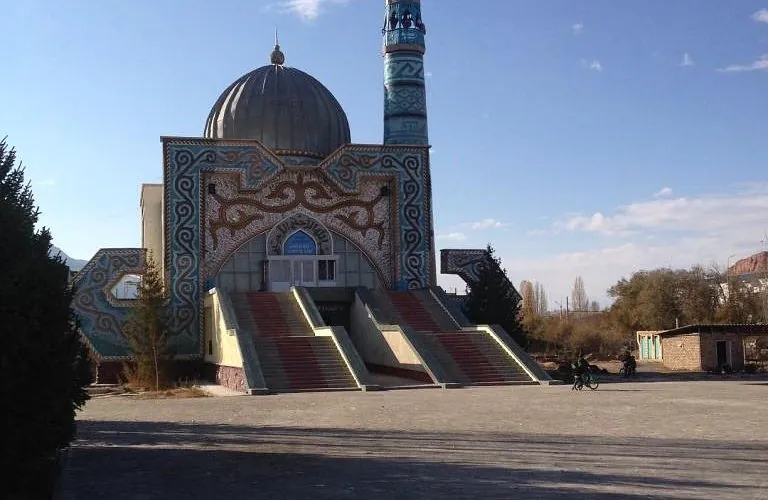

Naryn’s economy traditionally rests on pastoral livestock farming. Vast mountain pastures have long served as summer grazing for sheep, goats, horses, and yaks. The region specializes in sheep (especially fine-wool) and cattle breeding, wool processing, and meat-dairy products. Studies show about 80% of rural households engage in animal husbandry; in some districts (e.g., At-Bashy) yak herding persists - Naryn Region is the only in Kyrgyzstan where yaks remain integral to local livelihood. In valley bottoms, farmers grow potatoes, fodder, and grains, though agriculture is constrained by short summers and rugged terrain.
Industry is limited to small enterprises. Food producers - bakeries, a dairy plant, meat processing - operate in the city. Workshops process wool and sew felt handicrafts (shyrdak rugs, souvenir yurts) catering partly to tourists. Enterprises supply construction materials (brickworks, timber mills), but no large factories exist. Naryn primarily functions as an administrative and distribution center for surrounding rural areas.
The transport and logistics sector gains importance due to transit with China. Goods flow through Torugart Pass, entering Kyrgyzstan via Naryn. The city hosts truck stops and temporary storage facilities. A planned logistics hub in At-Bashy district, developed with foreign investors, faced local opposition and was reworked. Nevertheless, small traders leverage border proximity: city shops stock Chinese consumer goods, markets offer inexpensive imported wares.
In recent years, authorities have prioritized tourism as an economic driver. Many service businesses - guesthouses, cafés, tour operators, souvenir shops - cater to travelers. Locals say Naryn “lives off tourism” in season, when visitor spending sustains hoteliers, drivers, and artisans. Private entrepreneurs invest in tourism and sports infrastructure: new football pitches, ice rinks, and a ski base on nearby slopes have opened. West of Naryn on Ala-Myshyk Mountain lies a small ski resort (established in the 1980s) - in winter, visitors come from other regions. Ice skating, bandy, and cross-country skiing attract youth and support small-business growth around leisure activities.
The city budget relies heavily on trade and service taxes. Along the central street stand shops, markets, canteens, teahouses, and mini-hotels - businesses forming the backbone of local entrepreneurship. Major taxpayers include fuel traders, supermarkets, and mobile operators. To support business, Naryn Free Economic Zone offers tax holidays and other incentives.
Rural areas boast natural resources: coal, iron ore (the Jeti-Tau deposit is Kyrgyzstan’s largest), salt, and building materials. Development remains limited by remoteness. The Tien Shan (Kumtor) ore belt, partly in Naryn and Issyk-Kul regions, holds gold and rare metals. No mining operates in Naryn city itself, but future resource extraction could attract investment and jobs.
Thus, Naryn’s economy is multi-sectoral, dominated by agrarian and service activities. Despite being one of the country’s poorer regions, it has growth potential via ecotourism, transit trade, and local production of eco-products (meat, honey). Human capital - hardworking residents working in family farms or abroad - remains the key asset.
Naryn is predominantly Kyrgyz (98–99%), shaping its cultural character. Small Uzbek, Dungan, Uyghur, and Russian communities exist but are minor. Kyrgyz traditions and language remain strong, with Kyrgyz as the daily and official tongue.
Traditions and Holidays. Residents honor ancestral customs tied to nomadic life. The spring equinox celebration Nowruz is widely observed: the central square hosts folk ensemble concerts, dastorkans spread with national treats (kumis, boorsok), and games and competitions take place. Youth participate in horseback games - popular traditions include at chabysh races, kok-boru (goat polo), and other ethno-sports. In summer, locals migrate to jailoos (summer pastures) living in yurts - many families still own ancestral grazing lands in the mountains. Annual nomadic culture festivals are held on the shores of Son-Kul Lake, honoring epic heroes and musicians. Since 2002, Son-Kul celebrations have commemorated Taylak Batyr and Musa Bayetov, making the lake a favorite venue for ethno-festivals and sports.
Naryn is famed for its musicians and akyns (bards). The city’s notable cultural figures include actor/director Muratbek Ryskulov, People’s Artist Tattybubu Tursunbayeva, composer Jumamudun Sheraliyev, and master komuz improviser Musa Bayetov. Streets and institutions bear their names, with a central monument to Bayetov.
Museums and Heritage. The Naryn History Museum, founded in the 1930s, invites visitors to explore regional history - from archaeological finds (stone tools, petroglyphs) to ethnographic exhibits. Displays include traditional yurts, shyrdak carpets, national clothing, and utensils of mountain Kyrgyz. A dedicated hall honors the Great Patriotic War - many local men served and did not return, their memory preserved here.
Islamic traditions are also strong. The main Friday prayer is held at the Azreti Ali (Blue) Mosque, where thousands gather on Fridays and holidays. The mosque serves religious and social functions - hosting nikah ceremonies, community meetings, and youth lessons. Several smaller mosques exist in different neighborhoods, funded by local patrons. The city also has a small Orthodox church from the Russian garrison era, where the Russian community worships. Interfaith relations are friendly; Sunni Islam coexists with folk beliefs, with sacred mazars (shrines) and holy springs venerated around Naryn.
Everyday Life and Cuisine. Naryn’s culture is marked by hospitality. Visitors are welcomed with a cup of fresh kumis (fermented mare’s milk) and a slice of tandoor-baked nan. The city’s cuisine is famed for meat dishes, especially horsemeat. The signature dish giving the city its name is Naryn: a rich broth with thin noodles and sliced boiled horsemeat, garnished with onions and spices, served hot in bowls - perfect for cold mountain evenings. Other specialties include beshbarmak, kurt (dried sour milk balls), plov, and manti. Naryn also hosts a facility producing the region’s legendary amber trout - originally introduced to Lake Son-Kul and now a local delicacy in city cafés. Tea houses serve fresh trout and fragrant mountain honey from the Jumgal Valley.
Naryn’s cultural life, though unhurried, is rich in authenticity. Here, the spirit of the nomads endures alongside modern conveniences, offering travelers a glimpse into a timeless world.


Naryn has become an increasingly popular ecotourism and ethnographic tour destination in Kyrgyzstan. The city itself is quiet and small but serves as a gateway to numerous mountain and high-plateau routes. Tourists are drawn to both historical monuments and dramatic natural landscapes.
A stroll around the central square introduces Naryn’s monuments - you can see sculptures of local heroes, browse the bazaar for souvenirs (warm felt socks, rugs, wool crafts), and until recently, ride the city trolleybus - a novelty proudly touted by visitors (now a memory). Instead, tourists often take horseback rides through the streets.
Naryn’s main attractions lie beyond the city. The top draw is the 15th-century Tash-Rabat caravanserai - stone oasis at 3,200 m, about 110 km south of Naryn. Its well-preserved vaulted chambers of dressed stone amid wild mountain scenery evoke the ancient Silk Road. Summer yurt camps at Tash-Rabat let visitors experience nomadic life: spend the night in a yurt, taste pilaf, and imagine being an ancient merchant. Lower in the valley lie the ruins of Koshoi-Korgon fortress (7th–8th centuries), linked by legend to the epic hero Koshoi from the “Manas” epic. Archaeologists believe it was a Turkic Khaganate or Karluk outpost. Though only mounds remain, the site is atmospheric and historically significant.
Among the region’s natural wonders, Son-Kul Lake stands out - a 29 km-long high-altitude lake at 3,016 m surrounded by alpine meadows where thousands of horses and more yurts ring the shoreline than city buildings. Tourists undertake horseback and hiking trips from Naryn via mountain passes. Yurt camps on the lake shore immerse guests in nomadic life - horseback rides, starry skies at 3,000 m. Interestingly, Son-Kul was fishless until 1959 when biologists introduced trout, and now fly-fishing is popular. In 2016, Son-Kul hosted the Ethno-Sports “Nomad Games,” showcasing the region internationally.
Another high-altitude wonder is Chatyr-Kul Lake (3,500 m near Torugart). Its surreal blue waters and remote shores attract adventure seekers. Visiting requires a special border-zone permit, so most tourists admire it from the pass or read about it.
Mountain hiking routes of varying difficulty begin in Naryn - routes to Too-Ashuu Pass, At-Bashy and On-Archa gorges, Eki-Naryn (confluence of Big and Small Naryn rivers). White-water rafting on the Naryn River has emerged as an adventure sport in spring and summer, offering adrenaline and canyon views. In the valley itself, more gentle excursions are popular, such as to Salkyn-Tor (“Cool Place”) 15 km out - a shady juniper grove by a mountain stream ideal for picnics. Salkyn-Tor is a favorite weekend escape for Naryn residents.
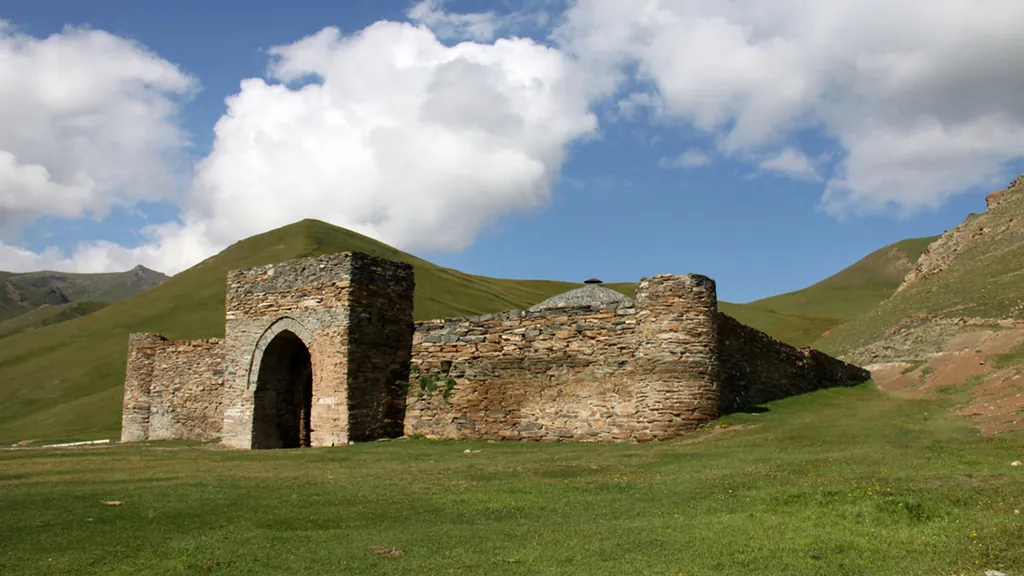
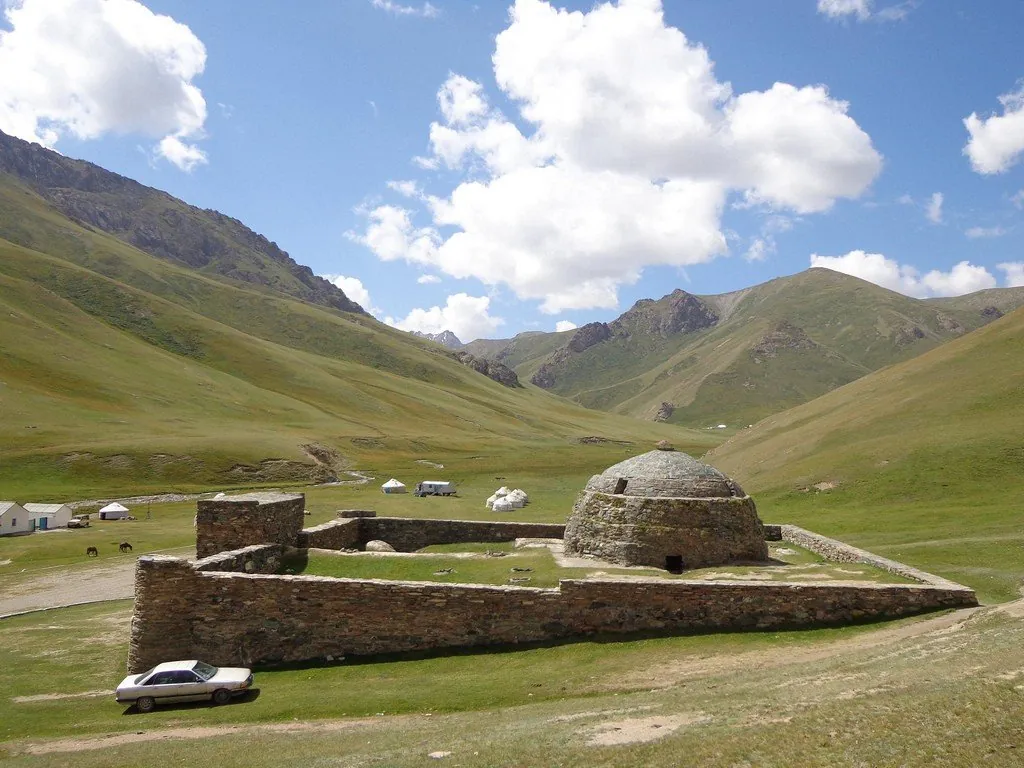
Despite its remoteness, Naryn has developed as a regional educational center. The city hosts several universities and colleges. Chief among them is the Naryn State University named after S. Namatov, founded in 1996 on the basis of a pedagogical institute. The university trains teachers, agronomists, and economists for the region. Its students come from across Naryn Region, making it a key hub of local scholarship. The university collaborates with national research institutes on regional history, high-mountain ecology, and mountain economy.
A major breakthrough was the 2016 opening of the University of Central Asia (UCA) campus in Naryn. UCA - an international institution founded by the Aga Khan and the governments of Kyrgyzstan, Kazakhstan, and Tajikistan - operates campuses in three countries. The Naryn campus focuses on mountain regional development, IT, and economics. It features modern classrooms, library, labs, and dormitories, with instruction in English by an international faculty. UCA has injected new life into Naryn’s academic and student community, attracting students from neighboring countries. The university also runs a continuous learning center for local schoolchildren, a cultural center, and hosts public lectures and exhibitions.
Overall, the youth education level in Naryn is higher than in rural areas - many graduates go on to study in the capital or abroad. Notably, native scholars such as agronomist Academician Zhamin Akimaliev hail from Naryn Region.
Sports traditionally play a significant role in city life. A stadium “Ala-Too” built in the Soviet era hosts football matches and events. The local football club “Ala-Too” competed in Kyrgyzstan’s Top League in the 1990s and 2010s, delighting local fans. While the team no longer plays at that level, a youth football school continues, and in 2021 a football academy opened with foreign support. Wrestling clubs (Kyrgyz kurash, judo), boxing, and athletics are active. Naryn athletes have won national medals - traditional wrestlers are particularly strong. In winter, locals enjoy bandy on frozen rinks and hockey on the river ice.
Today’s Naryn is a calm regional center with just over 40,000 residents. As of 2022, the population was about 41.4 k, showing slight growth. The demographic is young - nearly half are under 30, typical for Kyrgyzstan. Birth rates are high (families often have 3–4 children), but labor migration remains significant: many men work in Russia or Europe, sending remittances home. This migration partly explains the local standard of living lagging behind the national average.
Average salaries in Naryn are lower than in Bishkek, and food prices can be higher due to import costs. Nevertheless, home farming (many households keep livestock even within city limits) provides staple foods. In summer, almost every family heads to pastures - both work and a chance to stock up for winter. In recent years, government and donors have invested heavily in the region: building roads, housing, and water projects.
Environmental Conditions around the city are relatively good. Lack of major industry ensures clean air and water. The mountains act as natural filters, and Naryn Region is known for eco-products - meat, honey, medicinal herbs. However, winter coal heating can cause inversion smog in the basin. Authorities are addressing this by piloting gasification, converting boilers to electric heating, and promoting energy-efficient technologies. Waste management is another challenge - an overfilled landfill and a drive for recycling solutions are underway.
Investments and Development. In the 2020s, Naryn benefits from a state regional equalization program. In 2023–24, over a dozen projects were completed with national and international support: the bus station was renovated, new apartment blocks built under preferential mortgage schemes, and the city park modernized. A new Creative Initiatives Center broke ground in 2024.
Transport also receives attention. With the airport due to open by late 2025, Naryn will become more accessible to tourists and investors. Plans for an intercity transport hub include Chinese-backed improvements on the Torugart road and discussions of a China–Kyrgyzstan–Uzbekistan railway passing near Naryn (through the Arpa valley). If built, Naryn could transform from a remote oasis into a key logistics hub.
The City’s Spirit - this phrase captures Naryn’s atmosphere. Despite economic challenges, Naryn remains one of Kyrgyzstan’s safest and friendliest cities. Crime is low, people know their neighbors, and homes often remain unlocked - a mountainous camaraderie fosters mutual support. Residents pride themselves on their “tough city” for its honesty, hospitality, and closeness to pristine nature.
Forgotten Rivers and Mountain Peaks: A Journey Along the Southern Shore of Issyk-Kul is a three-day tour that immerses you in the unique natural beauty of Kyrgyzstan.
This route combines the picturesque mountain canyons of Kok-Moinok, Lake Issyk-Kul, the taste of national cuisine and a trip along one of the most beautiful roads in the country – the Boom Gorge.
In 3 days we will travel around Lake Issyk-Kul. We will spend two days in the city of Karakol, devoting them to skiing at the ski resort. And we will also relax in the thermal springs!
Skiing, mountains, and the winter atmosphere of Kyrgyzstan. A one-day ski trip to Orlovka – skiing near Bishkek
Visit two pearls of Kyrgyzstan in 1 day on a car tour
Experience all the beauty of Kyrgyzstan's nature behind the wheel of a comfortable and daring BMW F650GS tour enduro. These impressions are worth any money and will never be forgotten.
Visit the Valley of the Seven Bulls, see Issyk-Kul and relax in the thermal springs